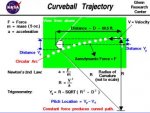- Jun 28, 2016
- 38
- 0
Tips on backdoor curve? Differences or changes to be made from the normal spot? Also, how do you change a "late break"?
Sent from my SM-G920P using Tapatalk
Sent from my SM-G920P using Tapatalk
Last edited:
Late break is a myth. It's physically impossible. In actuality, the ball is moving most at release, because the revolutions slow as it travels to the batter. The term comes because the batter doesn't notice it until late. I read a great article years ago about batting and the brain. Your eyes can't send the info fast enough to the brain, so the brain compensates and place the ball where past experiences say it should be. When it gets new info from the eyes, it readjusts the picture, which is the "jump" you hear people talk.k about. A lot like the matrix self correcting. ��
I understand your points. But is spin the only determination to this "break"? So if a pitch is "breaking" too early, tighten the spin for a later break so that the batter can identify it less?A "late break" means that the batter does not identify the pitch as a breaking pitch early. A "late break" does not mean that the ball changes its flight path late.
What do I mean?
A pitcher wants the same *INITIAL* flight path for the ball for the drop, rise or fastball. That is, she wants the same release point and angle of release for all of her pitches.
E.g., if you want a "late break" on a drop ball, you place a barrier between the pitcher and the plate that is just high enough for a fastball to go over. Then, you have the pitcher work on throwing drops that go over the barrier.
If you want a "late break" on a rise ball, you place a string between the pitcher and the plate. The string is high enough so a fastball goes just under it. Then, you have the pitcher work on throwing rise balls just under the string.
As to backdoor curves, you have to define what you mean by "backdoor curve"...because there is a great deal of confusion about what the pitch does.
Most people believe a "backdoor curve" is a pitch that, if it were a fastball, would be out of the strike zone. However, since it is a curveball it then breaks into the strike zone. Other believe the pitch is thrown in the strike zone, and then breaks out of the zone.
In any event, the pitcher has to work on locating the pitch. It is simply the pitcher working her butt off--day after day, week after week-- to perfect the control of the curveball.
I'm also referring to a right handed pitcher throwing a curve way inside and breaking back over the inside corner for a called strike.A "late break" means that the batter does not identify the pitch as a breaking pitch early. A "late break" does not mean that the ball changes its flight path late.
What do I mean?
A pitcher wants the same *INITIAL* flight path for the ball for the drop, rise or fastball. That is, she wants the same release point and angle of release for all of her pitches.
E.g., if you want a "late break" on a drop ball, you place a barrier between the pitcher and the plate that is just high enough for a fastball to go over. Then, you have the pitcher work on throwing drops that go over the barrier.
If you want a "late break" on a rise ball, you place a string between the pitcher and the plate. The string is high enough so a fastball goes just under it. Then, you have the pitcher work on throwing rise balls just under the string.
As to backdoor curves, you have to define what you mean by "backdoor curve"...because there is a great deal of confusion about what the pitch does.
Most people believe a "backdoor curve" is a pitch that, if it were a fastball, would be out of the strike zone. However, since it is a curveball it then breaks into the strike zone. Other believe the pitch is thrown in the strike zone, and then breaks out of the zone.
In any event, the pitcher has to work on locating the pitch. It is simply the pitcher working her butt off--day after day, week after week-- to perfect the control of the curveball.
So you do not think that the non-linear deceleration due to a high rate of spin is a factor?
Care to elaborate? You have linear velocity and angular velocity on the ball. They both decelerate. The only late break you're gonna get is when your linear velocity decreases and gravity pulls it do the ground. You will not get a late break going up or left or right. If you wish to show otherwise, get it peer reviewed, collect your Nobel Prize and add $1,000,000 to your bank account by throwing the law of entropy on its face.

